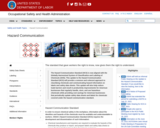
OER Articles
- Subject:
- Applied Science
- Health, Medicine and Nursing
- Material Type:
- Reading
- Author:
- Occupational Safety and Health Administration
- Date Added:
- 01/27/2022

OER Articles
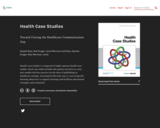
Health Case Studies is composed of eight separate health case studies. Each case study includes the patient narrative or story that models the best practice (at the time of publishing) in healthcare settings. Associated with each case is a set of specific learning objectives to support learning and facilitate educational strategies and evaluation.
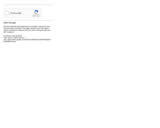
Readers will learn about the nature of health, health education, health promotion and related concepts. This will help to understand the social, psychological and physical components of health.
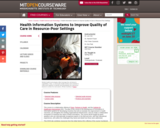
This course is a collaborative offering of Sana, Partners in Health, and the Institute for Healthcare Improvement (IHI). The goal of this course is the development of innovations in information systems for developing countries that will (1) translate into improvement in health outcomes, (2) strengthen the existing organizational infrastructure, and (3) create a collaborative ecosystem to maximize the value of these innovations. The course will be taught by guest speakers who are internationally recognized experts in the field and who, with their operational experiences, will outline the challenges they faced and detail how these were addressed.This OCW site combines resources from the initial Spring 2011 offering of the course (numbered HST.184) and the Spring 2012 offering (numbered HST.S14).
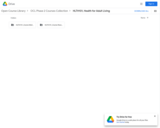
Exploration of the connection between personal choices and health across multiple dimensions of wellness. Focus on personalized behavior change strategies to advance health. The purpose of this course is for adults to advance their personal health. People generally have a good sense about what to do to be healthy, but actually doing it consistently is another matter. Because of this challenge, behavior change theory is applied throughout this course to engage students and evoke health-related change. By the end of it, we want students to be healthier than they were at the start and we want them to have an understanding of how to continue advancing their health throughout their lives.

Games-based elementary school health resource that educates elementary school students about the importance of well-balanced meals and physical activity.
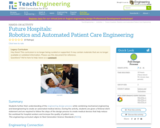
Students further their understanding of the engineering design process while combining mechanical engineering and bioengineering to create an automated medical device. During the activity, students are given a fictional client statement and are required to follow the steps of the design process to create medical devices that help reduce the workload for hospital workers and increase the quality of patient care.
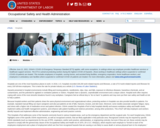
OER Article
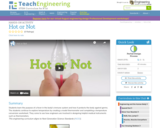
Students learn the purpose of a fever in the body's immune system and how it protects the body against germs. The students continue to explore temperature by creating a model thermometer and completing a temperature conversion worksheet. They come to see how engineers are involved in designing helpful medical instruments such as thermometers.

Students continue the research begun in the associated lesson as if they were biomedical engineers working for a pharmaceutical company. Groups each perform a simple chemical reaction (to precipitate solid calcium out of solution) to observe what may occur when Osteopontin levels drop in the body. With this additional research, students determine potential health complications that might arise from a new drug that could reduce inflammatory pain in many patients, improving their quality of life. The goal of this activity is to illustrate biomedical engineering as medical problem solving, as well as emphasize the importance of maintaining normal body chemistry.
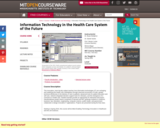
This innovative, trans-faculty subject teaches how information technologies (IT) are reshaping and redefining the health care marketplace through improved economies of scale, greater technical efficiencies in the delivery of care to patients, advanced tools for patient education and self-care, network integrated decision support tools for clinicians, and the emergence of e-commerce in health care. Student tutorials provide an opportunity for interactive discussion. Interdisciplinary project teams comprised of Harvard and MIT graduate students in medicine, business, law, education, engineering, computer science, public health, and government collaborate to design innovative IT applications. Projects are presented during the final class. ĺĘ Starting in Spring 2010, this course will be titled Enabling Technology Innovation in Healthcare and the Life Sciences.
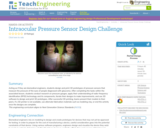
Acting as if they are biomedical engineers, students design and print 3D prototypes of pressure sensors that measure the pressure of the eyes of people diagnosed with glaucoma. After completing the tasks within the associated lesson, students conduct research on pressure gauges, apply their understanding of radio-frequency identification (RFID) technology and its components, iterate their designs to make improvements, and use 3D software to design and print 3D prototypes. After successful 3D printing, teams present their models to their peers. If a 3D printer is not available, use alternate fabrication materials such as modeling clay, or end the activity once the designs are complete.

A textbook which can be used for the field of Laboratory Medicine and Pathology, featuring digitized scans of laboratory slides which enables students to learn clinical hematology without access to a laboratory.
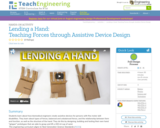
Students learn about how biomedical engineers create assistive devices for persons with fine motor skill disabilities. They learn about types of forces, balanced and unbalanced forces, and the relationship between form and function, as well as the structure of the hand. They do this by designing, building and testing their own hand "gripper" prototypes that are able to grasp and lift a 200 ml cup of sand.
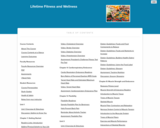
This course provides a study of fitness and wellness and their relationship to a healthy lifestyle. Defines fitness and wellness, evaluates the student's level of fitness and wellness, and motivates the student to incorporate physical fitness and wellness into daily living.

OER Video
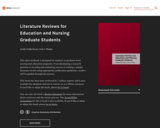
Literature Reviews for Education and Nursing Graduate Students is an open textbook designed for students in graduate-level nursing and education programs. Its intent is to recognize the significant role the literature review plays in the research process and to prepare students for the work that goes into writing one. Developed for new graduate students and novice researchers just entering into the work of a chosen discipline, each of the eight chapters covers a component of the literature review process. Students will learn how to form a research question, search existing literature, synthesize results and write the review. The book contains examples, checklists, supplementary materials, and additional resources. Literature Reviews for Education and Nursing Graduate Students is written by two librarians with expertise guiding students through research and writing assignments, and is openly licensed.

Introduction to basic NMR theory. Examples of biochemical data obtained using NMR summarized along with other related experiments. Detailed study of NMR imaging techniques includes discussions of basic cross-sectional image reconstruction, image contrast, flow and real-time imaging, and hardware design considerations. Exposure to laboratory NMR spectroscopic and imaging equipment included.
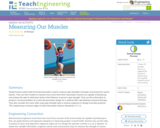
Student teams build model hand dynamometers used to measure grip strengths of people recovering from sports injuries. They use their models to measure how much force their classmates muscles are capable of producing, and analyze the data to determine factors that influence a person's grip strength. They use this information to produce a recommendation of a hand dynamometer design for a medical office specializing in physical therapy. They also consider the many other ways grip strength data is used by engineers to design everyday products.
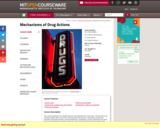
This course addresses the scientific basis for the development of new drugs. The first half of the semester begins with an overview of the drug discovery process, followed by fundamental principles of pharmacokinetics, pharmacodynamics, metabolism, and the mechanisms by which drugs cause therapeutic and toxic responses. The second half of the semester applies those principles to case studies and literature discussions of current problems with specific drugs, drug classes, and therapeutic targets.